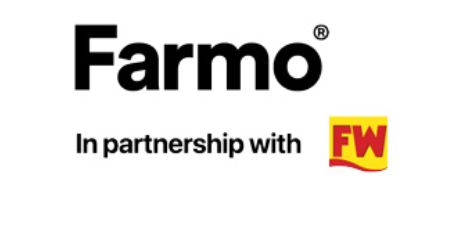Ultimate guide to buying a round baler 2026
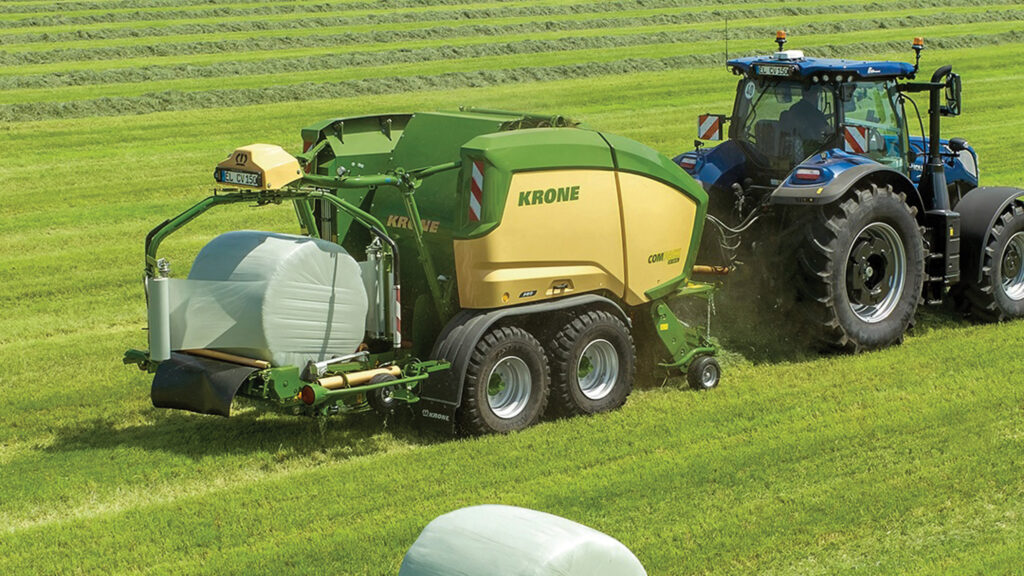 Krone ComPack © Krone
Krone ComPack © Krone New round baler models and upgrades promising higher work rates and denser bales have been announced by several manufacturers this autumn, ahead of planned launches at Agritechnica in mid-November.
See also: McHale revamps fixed-chamber round balers with new F5 series
However, some of these won’t be available to order in the UK until later next year so are included below, rather than being listed in our Ultimate Guide tables.
Work efficiency improvements, through reduced time spent servicing and changing net and film rolls, also feature.
And additional isobus-based automation, seen previously only on top-of-the-range machines, is starting to appear on base models too.
This makes it easier to create and store task data for accurate farm record-keeping, and helps contractors bill customers in timelier fashion.
However, even with all the new technology coming in, cost-effective models for smaller farms remain available in most ranges, and several manufacturers have held prices of current models to maintain affordability.
Round and square baler specs
Download the complete 2026 guide to round and square balers (PDF).
Case IH
Updates to the RB6 series variable-chamber round balers are due to be announced at Agritechnica, although the new models won’t be available until later next year.
Precise details are yet to be revealed, but the manufacturer says upgrades are designed to simplify the operator experience and increase productivity, while delivering consistent bales.
Claas
As customers seek higher density and extra productivity, Rollant 540 balers have been discontinued and replaced by Rollant 630 models, standardising the offering in terms of design and parts across the Claas baler range.
Changing from the Rollant 540 15-roller chamber to the Rollant 630’s 16-roller layout simplifies drivelines, with just three chains instead of four driving the baler and allowing 14% larger sprockets.
This increases the chain drive contact area with an associated reduction in wear.
Two extra knives give a shorter chop length, allowing more material to be packed into each bale for higher density.
The optional Maximum Pressure System (MPS) temporarily reduces the chamber diameter from 1.25m to 90cm when starting each bale to ensure positive rotation.
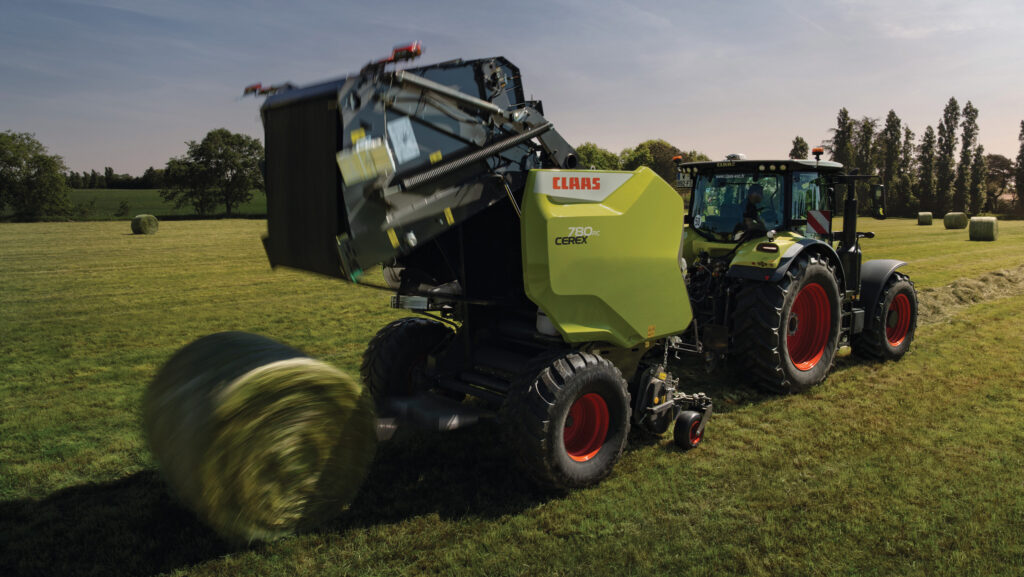
Claas Cerex © Claas
New Cerex 760 and 780 models with twin, wide endless belts slot in above current four-belt Variant balers in the line-up.
They use a single tensioning arm with sensors and independent hydraulic control, rather than dual tensioning arms, for higher density bales.
Several pre-series Cerex balers operated in the UK during the 2025 harvest, and the new models will be fully available for the 2026 season.
Claas UK says that Variant models remain ideal for mid-sized to large farms and smaller contracting businesses.
However, the new Cerex models are heavy-duty machines suitable for intensive operation by the biggest farms and contractors, and capable of higher outputs in a wide range of crops and conditions.
Variant balers have also received upgrades this year and, together with the Rollant 630 and Cerex models, now come with the Multiflow HD pick-up as standard.
Easily removable polymer stripper bands have been added instead of traditional steel to reduce risks of damage and downtime caused by stones and other solid objects.
Fendt
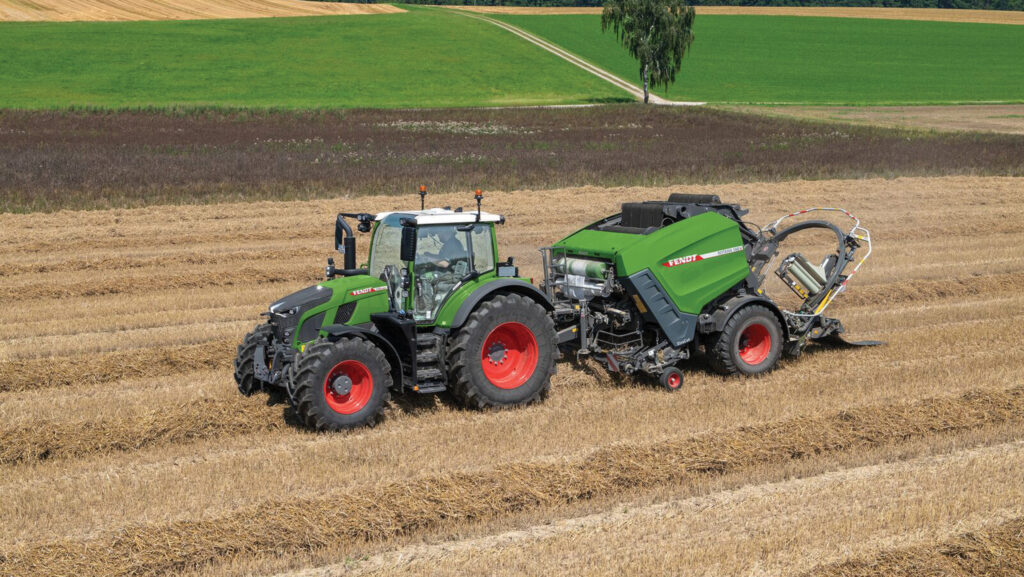
Fendt Rotana © Fendt
New semi-automation for swapping between film and net binding, a camera to monitor bale ejection, and a new development for twine binding have all been added to Fendt Rotana round balers this year.
Since 2023, Fendt has offered its rotating, quick-change system to switch between film and net binding.
The new automation option, however, allows changes to be made more conveniently from the cab rather than by manual rotation at the machine.
The operator just has to insert the film or net rolls into the feed arms, and up to three rolls can be loaded at a time into the magazine.
Introducing a rear camera option allows operators to monitor bound bales from the cab and respond more quickly when adjustments are needed, as well as increasing safety when reversing.
New options for twine binding include the ability to release four threads rather than two, simultaneously, reducing the idle time when binding.
The capacity to carry eight rolls of twine on the machine minimises hold-ups.
Other updates include LED rear lights to improve safety on the road.
Goweil
A standard three-year limited warranty on selected components, including the chamber rollers and rotor, has been added for both Goweil models.
John Deere
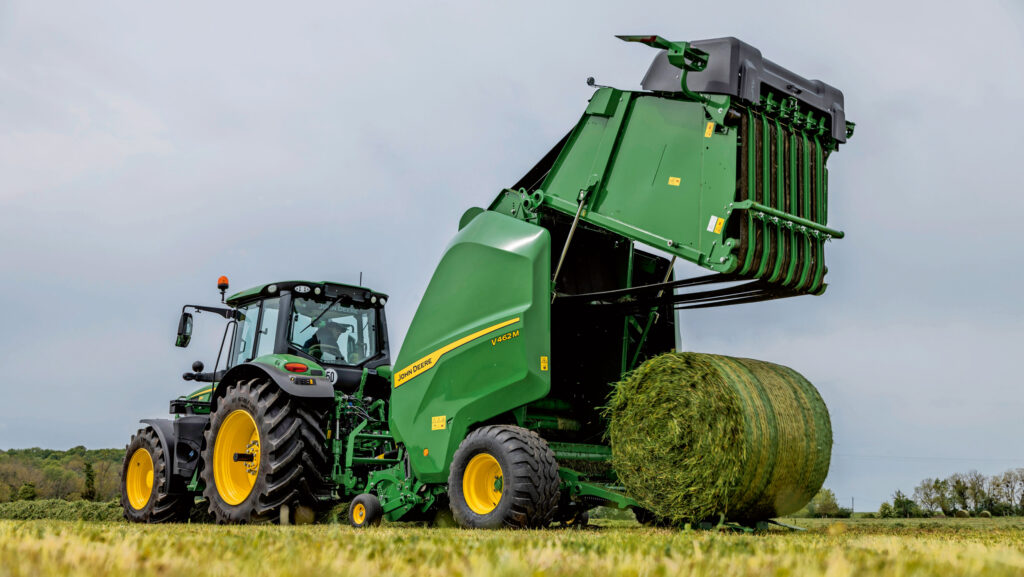
V462M © John Deere
Range upgrades for both fixed- and variable-chamber balers include isobus capability as standard for easier integration within the John Deere Operations Center farm management software and to monitor bale quality in real-time.
For contractors, the new connectivity improves record-keeping and allows task invoicing as soon as the tractor leaves the field.
Optional moisture monitoring for individual bales can be added, with alerts when levels exceed pre-defined parameters.
The size, drop location and moisture level of each bale is recorded and documented through the Operations Center, making it easier to plan logistics, storage and use.
V452R and V462R models have 15% increased driveline power intake capacity up to 210hp, which the manufacturer says equates to 8% extra productivity in the field.
The double-belt chamber provides high density with crop compression up to 140kg/cu m, 7% higher than previous models.
A weave automation feature uses a hydraulically operated, articulated drawbar so that the baler steers itself to ensure bales of even shape and density while the tractor maintains a straight course along the rows.
The active hitch also provides accurate pick-up tracking when travelling along curved rows and around corners.
A fast bale release unloads the bale and closes the tailgate within three seconds.
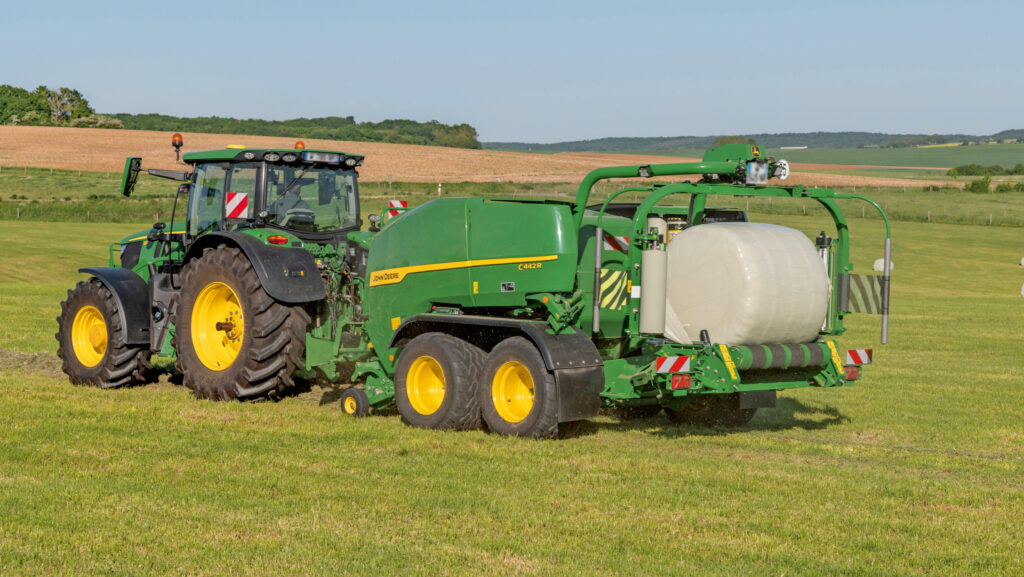
C442R © John Deere
C442R, C452R and C462R wrapping balers can now be equipped with an optional weighing system, using stress gauges on the four transport table rollers.
V452M and V462M models also have increased driveline power capacity, now 165hp, and gain endless belts with a rougher finish to ensure positive net feeding.
The hydraulic knife engagement allows cutting activation from the cab.
Krone
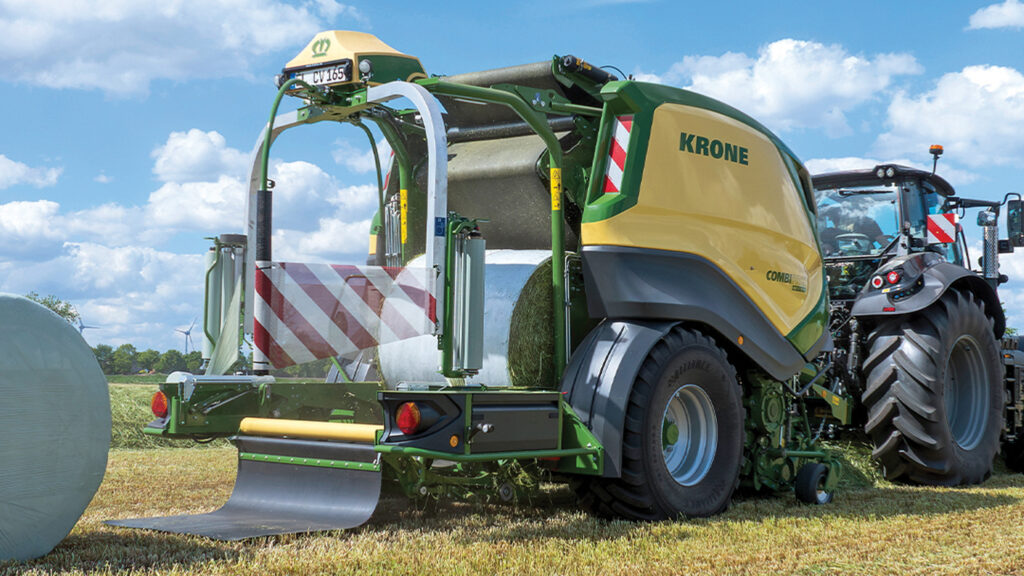
Krone CombiPack © Krone
New ComPack Pro and CombiPack models have been added to Krone’s round baler range and will be available in the UK later next year.
The ComPack Pro, based on the Comprima Plus, is designed for both farmers and contractors.
Both the ComPack F 155 XC Pro and V 150 XC Pro are solo balers.
The former with a semi-variable baling system producing bales from 1.25-1.5m diameter, and the latter fully variable making compact bales of 1-1.5m.
Both models are available as combination baler-wrappers, designated ComPack CF 155 XC Pro and CV 150 XC Pro, and with double wrapping arms operating at up to 36rpm.
The balers come with the EasyFlow pick-up, and the XCut cutting unit with 17 or 26 blades, switchable in groups for variable chop lengths.
A new isobus user interface with 3D graphics and animations links to optional cameras for process monitoring.
Integrated silage dosing from two 120-litre tanks comes with automatic switch-off during the tying cycle.
Meanwhile, the CombiPack HDP baler-wrapper combination has a unique 41-blade cutting unit and a fully variable bale chamber with a mono-belt to achieve extremely dense bales from 1-1.65m diameter.
The 2.23m EasyFlow pick-up with five rows of tines is designed for large swaths and a 41-blade chopper is standard.
This provides a theoretical cutting length of 27mm that Krone claims is shorter than any other machine in its class.
Bale transfer to the wrapping table takes just six seconds, the double wrapper operates at 40rpm, and roll changes can be made without leaving the cab.
Kuhn
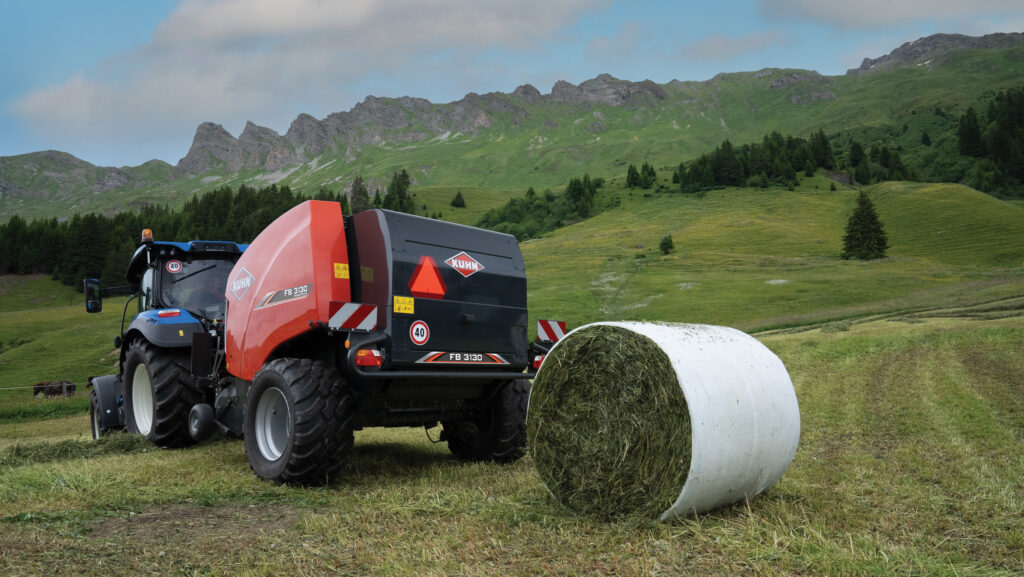
FB 3130 with film binding © Kuhn
Upcoming changes to the Kuhn line-up include a new film and net binding option for the FB 3130, previously only available for the FB 3135.
VB 7160 and VB 7190 models gain isobus tractor implement management (TIM) compatibility.
Kuhn claims these are the first balers with GPS section control of the pick-up, automatically raising it for headland turns or when areas already worked are passed again.
Bale weighing through the bale kicker is an option, with accuracy on slopes increased through a built-in inclinometer.
On-board moisture measurement is standard, and allowing dry matter yields to be calculated when bale weights are known.
VBP 7160 and VBP 7190 baler-wrappers are also offered with a new 33-knife cutting rotor for a theoretical 34mm fine chop, and a new sliding knife bank cassette allows tool-free access.
McHale
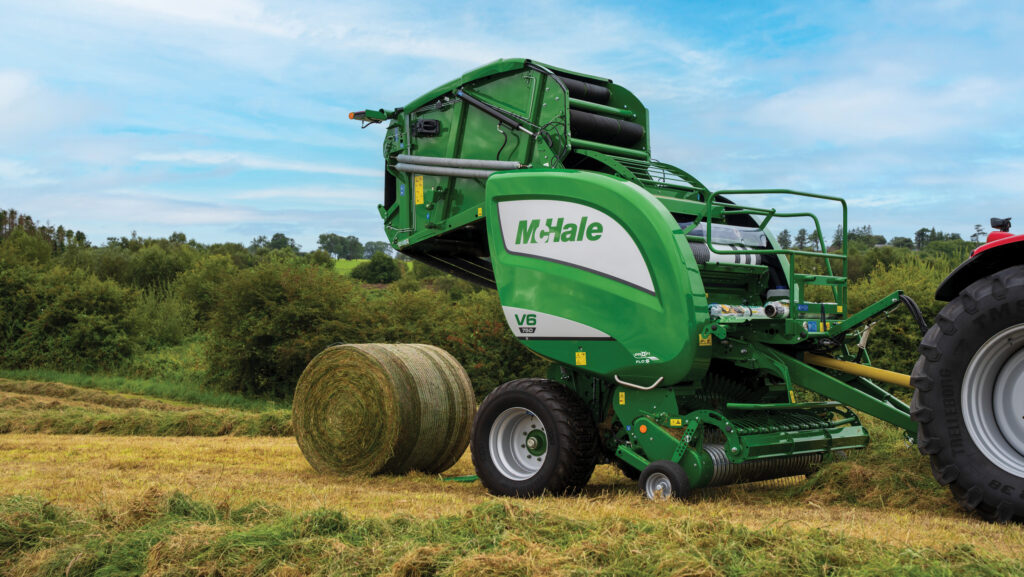
V6750-II © McHale
Latest generation V6-II and V8-II models replace current V6 and V8 versions.
The V6750-II and V6760-II plus V8950-II and V8960-II include isobus as standard, adding active density control to constantly adjust the chamber pressure as the bale builds.
All new models have quick-attach pick-up wheels, larger capacity oilers and bale shape indicators using information from load cells measuring pressure on the door latches.
New Holland
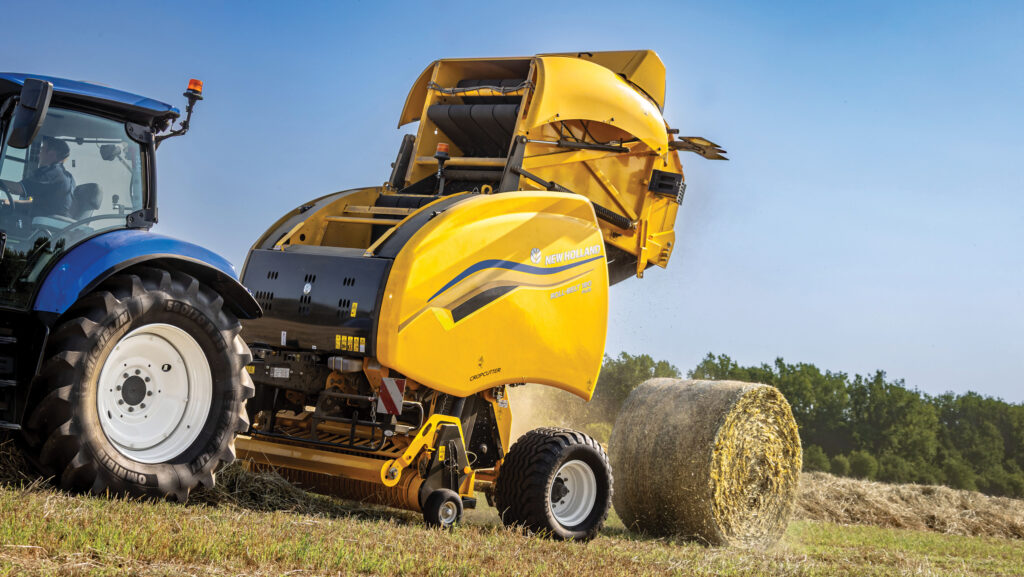
Roll-Belt 180 Plus © New Holland
Updates from New Holland include new Roll-Belt 150 and 180 Plus models, due to arrive in the UK later next year.
These have an uprated driveline, and strengthened chamber rollers manufactured through an extrusion process. These replace the current two-piece construction with welded seams.
Plus model balers come with isobus as standard, enabling additional features to be used with compatible tractors.
They also include TIM, where the tractor controls the baler – automating the stop, wrap, bale eject and start process.
Using the new connectivity, the New Holland FieldOps platform allows the baler position to be tracked and drop locations of every bale to be recorded.
Combining the bale drop location information with bale moisture monitoring, each bale’s recorded moisture content can be viewed on field maps and out-of-specification bales can be segregated for separate storage and use.

